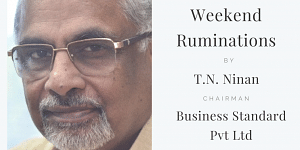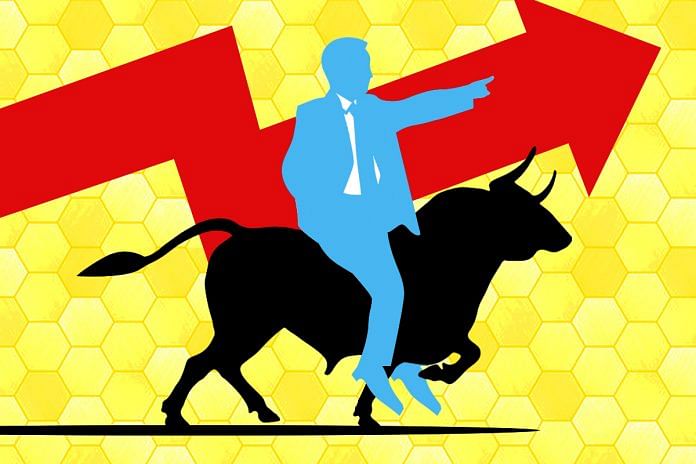An upswing in corporate performance and investment should last at least three years.
I wrote last week that the new financial year would be a period of economic recovery. The thought this week is that the broader economic uptick will be buttressed by a significant and sustained improvement in corporate performance. The 1,000 largest listed companies have already seen performance bottoming out, and scattered or uneven signs of improved numbers in the last couple of quarters. The new year could confirm that trend and mark not just the long-awaited end of a long and difficult period for most companies, but also the start of a multi-year upswing — with optimum corporate performance still perhaps a year or two away, in part because of the upswing in the commodity cycle, which will see costs rising for many companies.
As everyone knows, the corporate sector peaked in performance at about the time of the financial crisis of 2008, when the profits of the 1,000 largest listed companies were growing at more than 30 per cent annually, while revenue grew by between 20 per cent and 30 per cent. A comedown from those unreal heights was inevitable, and followed. What was not inevitable was the performance of the last few years, especially post-2012, when profit growth crashed or disappeared, private corporate capital expenditure dropped for six years in a row to reach a fifth of the levels earlier, and revenue growth dropped to virtually nothing. To a large degree this was the consequence of the excesses of the boom years when companies over-committed funds, even as credit ballooned and went into projects whose price assumptions were over-optimistic.

It is this grim period of adjustment that has come to an end in stages. Sales for the largest firms were up double-digit during the October-December quarter, profit growth has returned, and the ratio of debt to equity has been improving for at least two years now — which, looked at from the flip side, was of course the result of the lack of fresh investment. Though capacity utilisation levels have not seen a breakthrough, there is clear improvement, so an end to the investment famine may not be far off.
Many forecasts had put 2018-19 as the year that would see a full corporate recovery, but in recent weeks, observers have tended to push that back by a year, to 2019-20. The bankruptcy proceedings are still gathering momentum, and troubled companies that change hands are likely to start showing improved performance only after a time gap. An investment recovery will be helped by an anticipated improvement in profit margins — the return on equity had halved after 2008, causing a prolonged narrowing of the gap between the cost of funds and return on equity. This is now beginning to get reversed.
An upswing in corporate performance and investment should last at least three years. It may not be as sustained as the boom of the last decade, beginning as that did in or about 2003 and continuing for five years. In the previous decade of the nineties, the boom years were just three, from 1994 to 1997. On both occasions, the cycle broke with seismic changes in the global or regional economy, but also because corporate excess in India had kicked in and needed a corrective phase. Today, there is some concern globally about excessive debt, which could cause unpredictable shocks down the road. Domestically, if the minders of the economy are watchful about over-heating, we could avoid a repetition of the boom-bust cycle of the past.
Meanwhile, as is to be expected, the stock market has been on a tear somewhat ahead of the actual upswing in corporate performance, with the Sensex having recovered smartly from the shock of demonetisation in November 2016, and soared to new heights since. The index peaked three months ago, but has been resilient since then in the face of some selling pressure from overseas. Overall, the index is about 60 per cent higher than where it was four years ago, which suggests that some of the expected upswing in corporate performance is already reflected in share prices.
By special arrangement with Business Standard.



